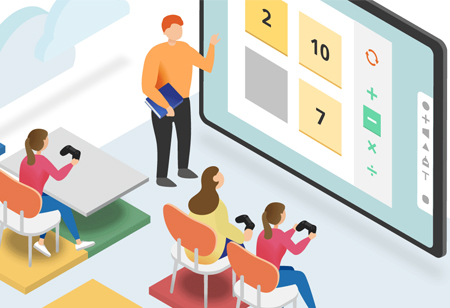THANK YOU FOR SUBSCRIBING
Be first to read the latest tech news, Industry Leader's Insights, and CIO interviews of medium and large enterprises exclusively from Education Technology Insights
Experience an Effective Learning Experience with Gamification
One of the intelligent ways that educators can gamify learning in their schools is by turning the semester schedule into a kind of quest every week where learners get a chance to win badges for both completion and mastery.

By
Education Technology Insights | Saturday, December 26, 2020
Stay ahead of the industry with exclusive feature stories on the top companies, expert insights and the latest news delivered straight to your inbox. Subscribe today.
One of the intelligent ways that educators can gamify learning in their schools is by turning the semester schedule into a kind of quest every week where learners get a chance to win badges for both completion and mastery.
FREMONT, CA: Mastering of gamification strategies involves a great deal of thorough preparation and restructuring of current teaching approaches by educators. The technique will only be successful if it is holistically incorporated into the curriculum. Here are some ways in which higher education institutions can effectively use gamification in their classrooms:
1. Implement Grading Gamification
One cannot deny that the conventional grading approach is the key to assessment and to the overall learning experience. But, by modifying the method of task assessment and score accumulation, educators can make a real difference in learning outcomes. The concept here is to gamify the course by swapping the grades with a more appealing experience points system where the grades of students can be calculated by the amount of points they accumulate at the end of the course. This way, students will advance to various levels of mastery (similar to games) for every single assignment/test that they find satisfying.
2. Point-Based Incentives
Incentivization is a strong motivator for children and adults alike. Similar to video games, winning points motivates students to feel rewarded for their efforts. Based on the classroom activities, educators can set up a point-based incentive system, providing points on various factors, such as on-time assignments, classroom engagement, or anything else that they want. The points system one uses should suit the classroom style and help the students monitor their progress.
Educators can also use a point-based system to complement the grading. For example, if students receive a certain number of points, teachers can either raise their final grade or lower their lowest grade. Besides inspiring students to participate, it also makes them feel valued for their achievements and encourages them to enjoy more class time.
3. Promoting the Search
One of the intelligent ways that educators can gamify learning in their schools is by turning the semester schedule into a kind of quest every week where learners get a chance to win badges for both completion and mastery. The approach here should be to award student accomplishments with acceptable badges instead of grades to reflect their achievements as more than just academic achievements. For instance, a student group in any particular class may receive a badge by successfully performing a presentation or initiating a chapter recap.
Check This Out: Mastery







